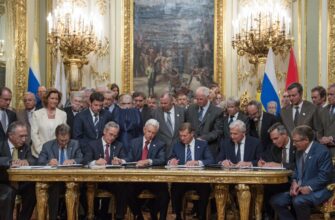Starting May 6, 2025, Germany will roll out permanent border controls with Poland, Austria, and France, marking a significant shift in its approach to migration and security. This decision, announced just days ago, has sparked debates across Europe, with reactions ranging from cautious support to outright criticism. For travelers, businesses, and residents near these borders, the changes could mean new challenges and adjustments. Our team at TheMors has dug into the details to bring you a clear picture of what’s happening, why it’s happening, and how it might affect you. Whether you’re planning a trip, running a cross-border business, or just curious about Europe’s evolving landscape, this article breaks it all down.
Material prepared by journalists of the information resource TheMors.
- Why Is Germany Tightening Border Controls?
- What Do Permanent Border Controls Mean?
- How Will Checks Work?
- Impact on Travelers
- Impact on Businesses
- Reactions from Neighbors and the EU
- Poland’s Criticism
- Austria’s Cautious Support
- France’s Silence
- EU’s Legal Concerns
- Why Now? Political and Social Context
- What Does This Mean for the Schengen Area?
- How to Prepare for the Changes
- Looking Ahead: What’s Next for Germany and the EU?
- Stay Informed with TheMors
Why Is Germany Tightening Border Controls?
Germany’s move to permanent border checks stems from a mix of political, social, and security pressures. The country has been grappling with irregular migration for years, with nearly 150,000 illegal crossing attempts recorded at its borders since 2021, according to DW analysis. The situation has fueled public demand for stricter measures, especially as the 2025 federal election looms. A recent Deutschlandtrend poll showed 67% of Germans favor permanent border controls, and 57% support refusing entry to undocumented migrants, even those seeking asylum.
The incoming chancellor-designate, Friedrich Merz, has made migration a cornerstone of his platform. On January 29, 2025, his Christian Democratic Union (CDU) pushed a non-binding motion in parliament to tighten border policies, including turning back asylum seekers at land borders. Although a follow-up migration bill failed on January 31, Merz’s commitment to “stop illegal entry” remains firm. He stated, “Anyone who tries to enter Germany illegally must expect to be stopped at the German border from May 6,” signaling a hardline stance.
Security concerns also play a role. Germany has faced criticism for being a transit hub for migrants moving through the Schengen Area, which allows passport-free travel across 29 European countries. By introducing checks at its internal Schengen borders, Germany aims to curb unauthorized entries and strengthen its position as a leader in EU security policy. However, this decision has raised eyebrows among neighbors, particularly Poland, which called the plan a “diplomatic snag.”
What Do Permanent Border Controls Mean?
Permanent border controls don’t mean sealed frontiers or a return to pre-Schengen days, but they will change how people move across Germany’s borders with Poland, Austria, and France. Here’s what to expect:
How Will Checks Work?
From May 6, German Federal Police will conduct random and targeted checks at land borders, focusing on vehicles, trains, and pedestrian crossings. Unlike temporary controls introduced in September 2024, these measures are designed to be ongoing, with no set end date. The controls will likely involve:
- Document verification to confirm legal entry.
- Vehicle searches for smuggled goods or unauthorized migrants.
- Increased patrols in border regions like Forst (near Poland) and Passau (near Austria).
Thorsten Frei, incoming head of the Chancellery, emphasized that the goal is to deter illegal crossings while maintaining smooth travel for legal residents and tourists. However, the European Court of Justice has ruled that informal returns of asylum seekers at internal borders violate EU law, putting Germany in a tricky legal spot.
Impact on Travelers
If you’re traveling to or from Germany, expect potential delays, especially at busy crossings like Frankfurt (Oder) on the Polish border or Freilassing near Austria. Checks may add 10–30 minutes to your journey, depending on traffic and scrutiny levels. Here’s what you need to know:
- Carry valid ID: EU citizens need a passport or ID card; non-EU travelers require a visa or residence permit.
- Plan extra time: Peak travel periods, like summer holidays, could see longer queues.
- Stay updated: Follow local news or apps like BorderWait for real-time border status.
For Ukrainians, additional changes kick in from May 1, 2025, affecting border control and social assistance in Europe. If you’re traveling from Ukraine via Poland, note that repairs at checkpoints like Krakivets and Shehyni from May 8 to mid-June may cause further delays.
Impact on Businesses
Cross-border trade and logistics could face disruptions. Germany’s borders with Poland, Austria, and France are critical for freight transport, with thousands of trucks crossing daily. The German Logistics Association estimates that even minor delays could cost businesses millions annually. Companies relying on just-in-time delivery, like automotive suppliers, may need to adjust schedules or stockpile inventory.
Reactions from Neighbors and the EU
Germany’s decision has stirred mixed responses from its neighbors and EU institutions, highlighting tensions within the Schengen Area.
Poland’s Criticism
Poland, led by Prime Minister Donald Tusk, has been vocal about its concerns. On May 2, 2025, Polish officials criticized Germany’s plan, arguing it undermines Schengen’s open-border principles. Tusk’s government, already fortifying its eastern border with Belarus, fears that German checks could redirect migrant flows back to Poland. Jaroslaw Kaczynski, leader of Poland’s opposition Law and Justice party, went further, accusing German police of “pushing illegal migrants” into Poland, escalating diplomatic friction.
Austria’s Cautious Support
Austria, which shares a busy border with Germany, has taken a more neutral stance. An Austrian interior ministry spokesperson told Politico, “We are confident that Germany’s actions comply with EU law.” However, Austria recently closed dozens of border crossings with Hungary and Slovakia due to a foot-and-mouth disease outbreak, showing its own focus on border security. This suggests Vienna may quietly align with Germany’s tougher approach.
France’s Silence
France has been less vocal, but its silence speaks volumes. As a key Schengen member, France has its own history of temporary border controls, particularly during terror threats. The new German policy could prompt France to tighten its own borders, creating a domino effect across the EU.
EU’s Legal Concerns
The European Commission has warned that permanent internal border controls could violate Schengen rules, which prioritize free movement. Luxembourg and Spain have already signaled objections, with Luxembourg threatening to lodge a formal complaint if Germany extends its controls beyond temporary measures. The Commission may review Germany’s plan in mid-2025, potentially leading to legal challenges.
Why Now? Political and Social Context
Germany’s border control push comes at a pivotal moment. The country is weeks away from a federal election on February 23, 2025, and migration is a hot-button issue. The far-right Alternative for Germany (AfD) has gained traction, with leader Alice Weidel pushing anti-immigration rhetoric. Merz’s CDU, while distancing itself from AfD, has adopted tougher policies to win back voters. A January 31, 2025, parliamentary vote on a migration bill, backed by AfD, was narrowly rejected, but it exposed the growing influence of anti-migrant sentiment.
Public protests have also shaped the debate. On February 2, 2025, over 160,000 people rallied in Berlin against harsh immigration rules, chanting “Loud against Nazis.” Yet, polls show a majority of Germans support stricter borders, reflecting a complex divide. Merz’s decision to implement controls before taking office as chancellor signals his intent to act decisively, even at the risk of alienating EU partners.
What Does This Mean for the Schengen Area?
The Schengen Area, a symbol of European unity, faces strain as member states reintroduce internal controls. Germany’s move follows its earlier extension of checks to borders with the Czech Republic, Switzerland, and others in September 2024. If other countries follow suit, the Schengen zone could see a patchwork of restrictions, undermining its core principle of free movement.
For travelers, this could mean more bureaucracy and delays across Europe. For businesses, supply chain costs may rise. For migrants, the path to asylum in Germany becomes tougher, potentially redirecting flows to neighboring countries like Poland or Hungary. The long-term impact depends on whether the EU can harmonize migration policies or if national interests will dominate.
How to Prepare for the Changes
If you’re affected by Germany’s new border controls, here are practical tips to stay ahead:
- For Travelers: Always carry a valid passport or ID. Check border status before traveling, especially during peak seasons. Consider alternative routes, like flying into Germany, to avoid land border delays.
- For Businesses: Plan for potential delays in logistics. Communicate with suppliers and clients about adjusted timelines. Explore digital tools for real-time tracking of shipments.
- For Residents: If you live near the border, expect increased police presence. Stay informed through local authorities or news outlets like TheMors for updates on road closures or checkpoints.
Looking Ahead: What’s Next for Germany and the EU?
Germany’s permanent border controls, effective May 6, 2025, are a bold step that could reshape its role in the Schengen Area. As Friedrich Merz prepares to take office, his government will face pressure to balance security with EU obligations. The policy’s success will depend on its implementation—whether it deters illegal migration without crippling cross-border travel and trade. Meanwhile, Poland, Austria, and France will closely watch how these checks affect their own borders and economies.
For now, the EU faces a test of unity. Can Schengen adapt to national security demands, or will it fracture under political pressures? The coming months will reveal whether Germany’s gamble pays off or sparks a broader crisis.
Stay Informed with TheMors
Germany’s new border controls are just one piece of a rapidly changing global landscape. Want to keep up with the latest on migration, travel, and European politics? Head to TheMors – Breaking News for more in-depth articles, updates, and insights. Our team is here to cut through the noise and deliver the stories that matter. Visit TheMors today and explore our blog for more!









